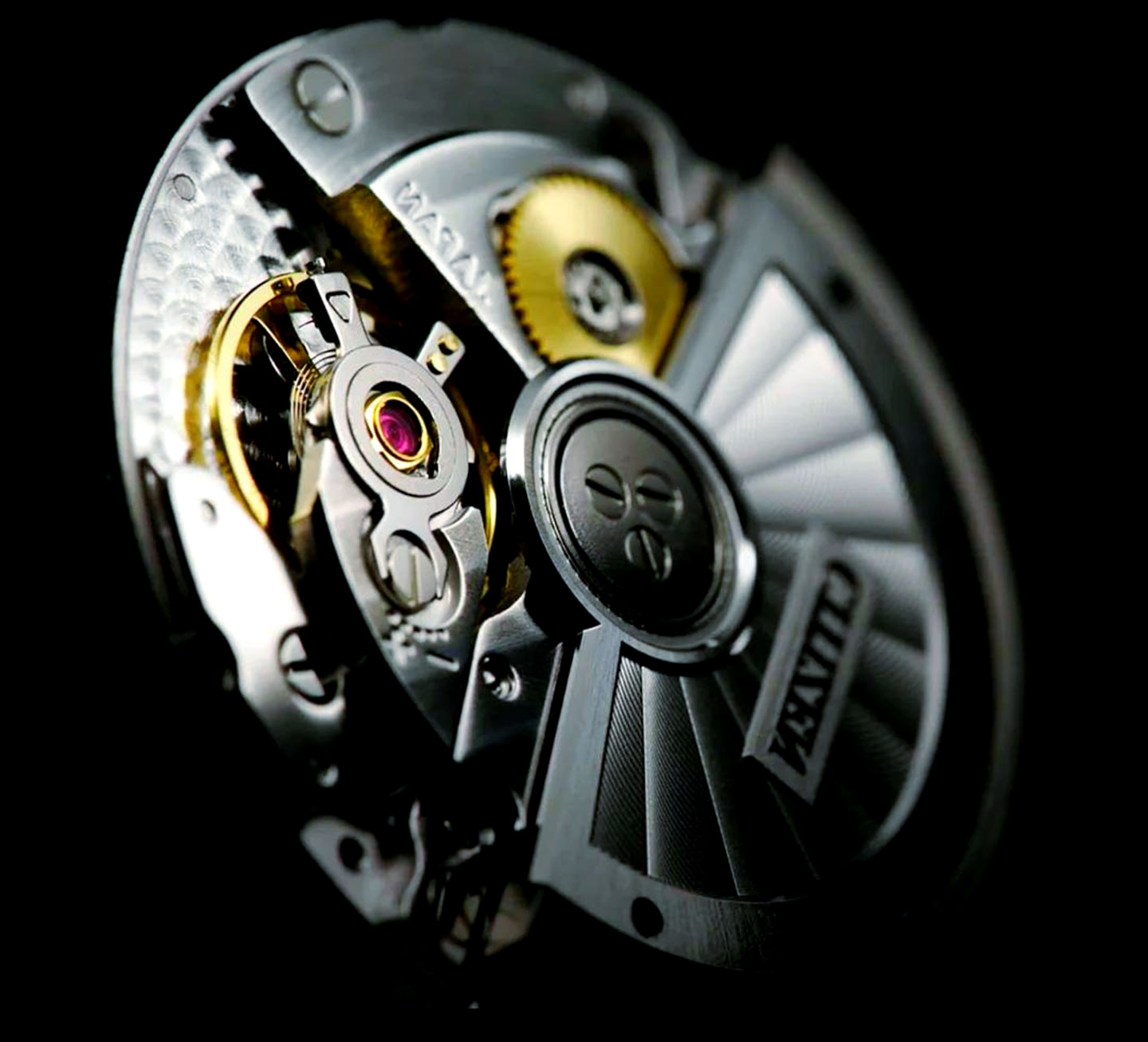When it comes to diving watches, one of the most crucial decisions you'll make is choosing the right movement. The movement, often referred to as the "heart" of the watch, is responsible for keeping time and powering the hands. With so many options available, it can be overwhelming to determine which movement is best suited for your diving needs. In this article, we'll explore the different types of movements commonly found in diving watches and provide you with the information you need to make an informed decision.
Mechanical Movements
Mechanical movements are known for their craftsmanship, precision, and timeless appeal. These movements are powered by a complex system of gears and springs, which are typically wound either manually or automatically. Mechanical diving watches are often favored by watch enthusiasts and collectors for their intricate design and the mechanical artistry involved in their creation.
Manual-Winding Mechanical Movements
Manual-winding mechanical movements require the wearer to manually wind the watch by turning the crown. This action tightens the mainspring, which then releases energy to power the movement. Manual-winding movements are known for their simplicity and reliability, and they often offer a higher level of precision compared to other types of movements. However, they do require regular winding to keep the watch running, which can be inconvenient for some users.
Automatic Mechanical Movements
Automatic mechanical movements, also known as self-winding movements, are powered by the natural motion of the wearer's wrist. As the wearer moves their arm, a rotor inside the watch spins, which winds the mainspring. Automatic movements offer the convenience of not requiring manual winding, as long as the watch is worn regularly. They also tend to have a longer power reserve compared to manual-winding movements, meaning they can continue to run for a certain period of time even when not being worn. However, automatic movements are generally more complex and expensive to produce compared to manual-winding movements.
Benefits of Mechanical Movements in Diving Watches
Craftsmanship and Aesthetics: Mechanical movements are often considered works of art, with their intricate gears and delicate mechanisms on display through a transparent case back. They offer a sense of luxury and sophistication that many watch enthusiasts appreciate.
Precision: High-quality mechanical movements can provide excellent timekeeping accuracy, often within a few seconds per day. This is especially important for divers who rely on their watches to accurately track their dive time.
Longevity: With proper care and maintenance, mechanical watches can last for generations. The durability and reliability of mechanical movements make them a popular choice for those looking for a long-term investment.
Mechanical Appeal: The tactile experience of winding a manual-winding watch or feeling the smooth sweep of the second hand on an automatic movement can be a source of enjoyment for many watch wearers.
Drawbacks of Mechanical Movements in Diving Watches
Maintenance: Mechanical movements require regular servicing to ensure optimal performance. This can involve cleaning, lubricating, and adjusting the movement, which can be costly and time-consuming.
Sensitivity to External Factors: Mechanical movements are more sensitive to external factors such as temperature, humidity, and magnetic fields. These factors can affect the accuracy of the watch and may require additional precautions to be taken when diving.
Power Reserve: While automatic movements offer a longer power reserve compared to manual-winding movements, they still require the watch to be worn regularly to maintain power. If the watch is not worn for an extended period of time, it may stop running and need to be reset.

Quartz Movements
Quartz movements are the most common type of movement found in watches today. These movements are powered by a battery and use a quartz crystal to regulate the time. Quartz crystals vibrate at a very precise frequency when an electric current is applied to them, which is used to drive the watch's hands. Quartz movements are known for their accuracy, reliability, and low maintenance requirements.
Benefits of Quartz Movements in Diving Watches
Accuracy: Quartz movements are extremely accurate, often within a few seconds per month. This makes them an ideal choice for divers who need a watch that can keep precise time underwater.
Low Maintenance: Quartz movements require very little maintenance compared to mechanical movements. The battery typically needs to be replaced every few years, and there are no moving parts that require lubrication or adjustment.
Cost-Effective: Quartz watches are generally more affordable compared to mechanical watches, making them a popular choice for those on a budget.
Resistance to External Factors: Quartz movements are less sensitive to external factors such as temperature, humidity, and magnetic fields compared to mechanical movements. This makes them more reliable for use in harsh diving conditions.
Drawbacks of Quartz Movements in Diving Watches
Lack of Mechanical Appeal: Quartz movements do not offer the same level of mechanical artistry and craftsmanship as mechanical movements. They are often considered to be more utilitarian in nature.
Battery Replacement: While the battery in a quartz watch typically lasts for several years, it will eventually need to be replaced. This can be an inconvenience for some users, especially if they are in a remote location.
Perceived Value: Some watch enthusiasts may perceive quartz watches as being less valuable or prestigious compared to mechanical watches. This can affect the resale value of the watch.
Other Types of Movements
In addition to mechanical and quartz movements, there are a few other types of movements that are less commonly found in diving watches but are worth mentioning.
Solar Movements
Solar movements are powered by light, either natural sunlight or artificial light. These movements use a solar cell to convert light into electrical energy, which is then used to power the watch. Solar movements offer the convenience of never having to replace the battery, as long as the watch is exposed to light regularly. They are also more environmentally friendly compared to traditional battery-powered movements.
Kinetic Movements
Kinetic movements are similar to automatic mechanical movements in that they are powered by the natural motion of the wearer's wrist. However, instead of using a mainspring to store energy, kinetic movements use a small generator to convert the motion of the wrist into electrical energy. This energy is then stored in a rechargeable battery, which powers the watch. Kinetic movements offer the convenience of not requiring manual winding or battery replacement, as long as the watch is worn regularly.
Choosing the Right Movement for Your Diving Watch
When choosing a movement for your diving watch, there are several factors to consider. Here are some key points to keep in mind:
Diving Requirements
Think about your specific diving needs and how the movement will perform in those conditions. If you are a serious diver who spends a lot of time underwater, you may want to consider a mechanical movement for its precision and durability. However, if you are a casual diver or simply looking for a watch to wear on land and in the water, a quartz movement may be a more practical and cost-effective choice.
Budget
Set a budget for your diving watch and consider the cost of the movement. Mechanical watches are generally more expensive compared to quartz watches, especially those with high-end movements. However, there are also many affordable mechanical watches available on the market. Determine how much you are willing to spend and look for a watch that offers the features and quality you desire within your budget.
Maintenance and Servicing
Consider the maintenance requirements of the movement. Mechanical movements require regular servicing to ensure optimal performance, which can be costly and time-consuming. Quartz movements, on the other hand, require very little maintenance. If you are not interested in dealing with the hassle of regular servicing, a quartz movement may be a better choice for you.
Personal Preference
Ultimately, the choice of movement comes down to personal preference. Some people prefer the mechanical artistry and craftsmanship of a mechanical movement, while others value the accuracy and low maintenance of a quartz movement. Consider your own style and preferences when making your decision.
So, choosing the right movement for your diving watch is an important decision that can have a significant impact on your diving experience. Mechanical movements offer craftsmanship, precision, and a timeless appeal, while quartz movements are known for their accuracy, reliability, and low maintenance requirements. By considering your diving requirements, budget, maintenance preferences, and personal style, you can make an informed decision and choose a diving watch with a movement that is perfect for you.
At Rower Watch, we offer a wide range of diving watches with different movements to suit every need and budget. Whether you prefer the classic elegance of a mechanical movement or the practicality of a quartz movement, we have the perfect watch for you. Explore our collection today and find your ideal diving companion.
#divingwatch #customdivewatchmanufacturer #Chinadivemanufacturer #oemwatch #customwatch

 Home
Home Gezfeel
Gezfeel Jul 21 2025
Jul 21 2025



 Address: Room 405, Building A, Qianhai Zhichuang Technology Industrial Park, No.60 Nanchang Road, Nanchang Community, Xixiang Street, Baoan District, Shenzhen, China
Address: Room 405, Building A, Qianhai Zhichuang Technology Industrial Park, No.60 Nanchang Road, Nanchang Community, Xixiang Street, Baoan District, Shenzhen, China

